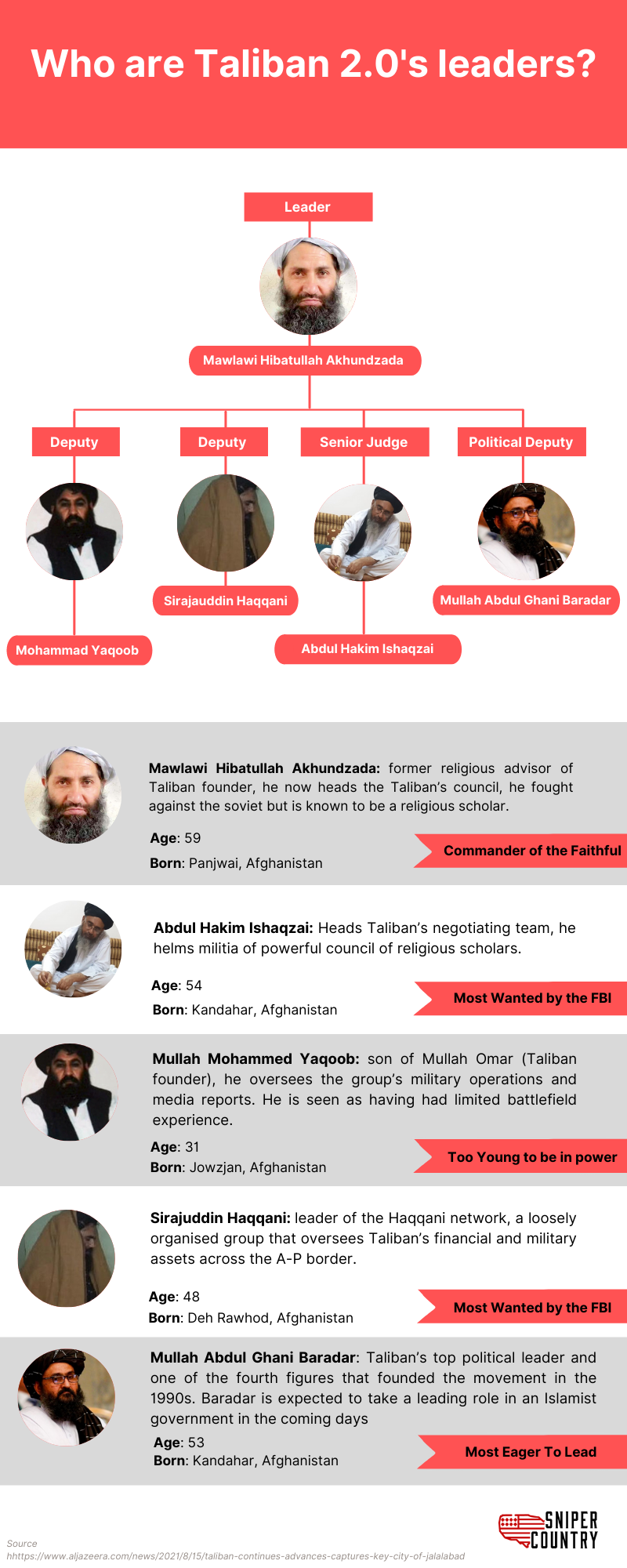In response to the 9/11 attacks on New York and Washington, the US intervened militarily quickly, removing the Taliban and vowing to support democracy and eliminate the threat. Two decades later, foreign forces are pulling out of Afghanistan as quickly as they were drawn in. With NATO’s support and Obama’s “troop surge” in 2009, the US was able to contain the Taliban.
When NATO’s international forces ended their mission in 2014, the responsibility for security was left to the Afghan army. This represented the Taliban’s opportunity to seize more territory and take over the country.
Who are they?
The Taliban emerged in the civil war that followed the withdrawal of Soviet troops in 1989. In 1994, the Taliban were made up of former Afghan resistance fighters (“mujahedeen”) who fought the invading Soviet forces in the 1980s. Their goal was to impose their vision of Islamic law on the country by removing any foreign influence. The Taliban hosted Al Qaeda, led by Ben Laden who orchestrated the 9/11 attack. Since the US-led forces removed the Taliban in 2001, the group has been on the offensive in recent months and is now on the brink of seizing power again.
Today, the Taliban has taken over Kabul, the capital city where they have seized power two weeks before the U.S. was set to complete its troop withdrawal. Former Afghan president Ashraf Ghani fled the country (“to prevent further bloodshed”), Afghan troops surrendered and melted away, leaving the Taliban in full control of the situation.
Current Leaders
Since 2016, the Taliban have been led by Mawlawi Haibatullah Akhundzada, a senior religious cleric from the Taliban’s founding generation. Another key player is Mullah Ghani Baradar, the Taliban co-founder, who recently built close ties with China’s Foreign minister Wang Y.
What do they want?
Many worry that their return will take Afghanistan back to what it was two decades ago when women’s rights were severely restricted. They rely on harsh interpretation of Islamic law, and on the way Afghanistan was from 1996 to 2001. Although they have promised to respect women’s rights and prevent Afghanistan from being used as a base for terror attacks, many Afghans are skeptical of those promises.
The Taliban have been using their willingness to “fight against occupation” as a way to convince Afghans to follow their lead. This was demonstrated through their ability to target Afghan security and civilians by advancing rapidly across the country.
What’s next?
Although the Taliban say they want an “inclusive, Islamic government”, they are currently holding several negotiations with senior politicians, including leaders in the former government. Other major concerns include the potential regenerate of al-Qaeda, and the fact that such groups could grow much faster than expected.
Who will be the leaders of Taliban 2.0?
Taliban enters Afghan presidential palace after Ghani flees. Ex-advisor to president Ghani stated that international forces sent to evacuate foreign nationals should remain in the country until the Taliban keep their promises.
Many of today’s leaders were in power when the Taliban ruled Afghanistan from 1996 to 2001. The supreme leader, Mawlawi Hibatullah Akhundzada, served as religious advisor of Taliban to Mullah Mohammed Omar, Taliban founder. Another co-founder, Mullah Abdul Ghani Baradar is the Taliban’s political chief, and is tipped to be president.

Like this infographic? Feel free to embed or share.
Will these leaders be shaping a new government through consensus or force? What kind of governance system will they establish? Clear objectives include re-establishing the Islamic Emirate of Afghanistan, with a strict version of sharia law, and ruling out holding elections. There is more to come, once a more established leadership settles in.
Sources
- https://edition.cnn.com/2021/08/16/middleeast/taliban-control-afghanistan-explained-intl-hnk/index.html
- https://edition.cnn.com/2021/07/29/china/china-taliban-tianjin-afghanistan-intl-hnk/index.html
- https://apnews.com/article/taliban-takeover-afghanistan-what-to-know-1a74c9cd866866f196c478aba21b60b6
- https://apnews.com/article/taliban-takeover-afghanistan-what-to-know-1a74c9cd866866f196c478aba21b60b6
- https://www.aljazeera.com/news/2021/8/15/taliban-continues-advances-captures-key-city-of-jalalabad
- https://www.ft.com/content/65f61fb1-9462-4e25-990a-702812860b76
- https://www.bbc.co.uk/news/world-south-asia-11451718
- https://www.aljazeera.com/news/2021/8/15/taliban-continues-advances-captures-key-city-of-jalalabad
- https://www.theguardian.com/world/2021/aug/17/the-taliban-leaders-in-line-to-become-de-facto-rulers-of-afghanistan
- https://www.forbes.com/sites/joewalsh/2021/08/17/who-runs-the-taliban-these-are-some-of-the-groups-top-leaders/?sh=30347c5d1a14
- https://www.ft.com/content/25bb6ed9-fdef-451f-a7a7-4a7b9e4ab852








